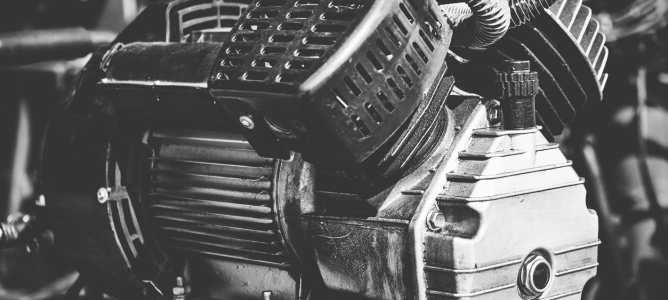Air compressors are indispensable tools across a variety of industries, known for their ability to convert power into potential energy stored in pressurized air. This transformation is achieved through a process that involves drawing in atmospheric air, compressing it to increase its pressure, and storing it in a tank or releasing it immediately for use. The stored pressurized air can then be utilized to power a myriad of tools and machinery, making air compressors a cornerstone in numerous applications.
The importance of air compressors cannot be overstated, as they play a critical role in enhancing productivity and efficiency in several sectors. In manufacturing, air compressors are used to operate assembly line tools, spray painting equipment, and robotic arms, thereby streamlining production processes.
In the automotive repair industry, they are essential for inflating tires, powering pneumatic tools, and facilitating spray painting. Additionally, the construction industry relies heavily on air compressors to drive nail guns, jackhammers, and other heavy-duty equipment, underscoring their versatility and utility.
Understanding how air compressors work involves appreciating the basic principle of converting electrical, diesel, or gas power into mechanical energy that compresses air. This compressed air can be released in a controlled manner to perform various tasks, ranging from simple household uses to complex industrial operations. The efficiency and reliability of air compressors make them a preferred choice for both small-scale and large-scale applications.
This introductory overview sets the stage for a more detailed exploration of the main types of air compressors. By delving into the specific characteristics and uses of each type, we can gain a comprehensive understanding of their roles and benefits in different contexts.
Whether for industrial, commercial, or personal use, selecting the right air compressor is crucial for optimizing performance and achieving desired outcomes.
Reciprocating Air Compressors
Reciprocating air compressors, often referred to as piston compressors, are among the most prevalent types of air compressors used in various industries. These compressors operate on a fundamental principle: a piston moves within a cylinder, driven by a crankshaft, to compress air.
As the piston descends, it creates a vacuum that draws air into the cylinder. When the piston ascends, it compresses the air, increasing its pressure before releasing it into a storage tank or directly into the application system.
Reciprocating air compressors come in two main variations: single-stage and two-stage. In a single-stage compressor, the air is compressed in a single stroke of the piston, making it suitable for applications requiring pressures up to 150 psi. These compressors are often used in smaller-scale operations, such as in automotive repair shops, woodworking, and other light industrial environments.
Two-stage compressors, on the other hand, compress the air in two stages, achieving higher pressures up to 200 psi. The air is first compressed in one cylinder, cooled, and then further compressed in a second cylinder. This process makes two-stage compressors more efficient for heavy-duty applications, including manufacturing, construction, and large-scale industrial processes.
The primary advantages of reciprocating air compressors include their high power output and efficiency, particularly in small to medium-scale applications. They are also relatively cost-effective and easy to maintain, with readily available parts and straightforward mechanical designs.
However, they do come with certain limitations. Reciprocating compressors tend to be noisier compared to other types of compressors, which can be a concern in noise-sensitive environments. Additionally, they require regular maintenance to ensure optimal performance and longevity, including routine checks of the piston, cylinder, and crankshaft mechanisms.
Despite these limitations, reciprocating air compressors remain a popular choice due to their robustness and ability to deliver consistent, high-pressure air. Their versatility across various applications, from small workshops to large industrial settings, underscores their importance in the world of air compression technology.
Rotary Screw Air Compressors
Rotary screw air compressors are integral to various industrial applications due to their efficiency and reliability. These compressors operate on a straightforward yet highly effective principle. At the core of their design are two helical screws that rotate in opposite directions.
As these screws turn, air is trapped between them, progressively reducing the volume and consequently increasing the pressure. This continuous rotary motion allows for a stable and consistent flow of compressed air, which is essential for industrial processes demanding high airflow rates.
One of the standout features of rotary screw air compressors is their capacity for continuous operation. Unlike other types of compressors that may require frequent pauses to prevent overheating, rotary screw compressors can run uninterrupted for extended periods.
This makes them particularly suitable for large-scale operations where downtime is not an option. Furthermore, these compressors deliver a high airflow rate, ensuring that sufficient compressed air is available to meet the demands of various industrial applications.
Reliability is another hallmark of rotary screw air compressors. The design minimizes the number of moving parts, reducing wear and tear and subsequently lowering maintenance needs. This is a significant advantage over reciprocating compressors, which often require more frequent servicing and parts replacement.
Additionally, the rotary screw design tends to produce less noise during operation, contributing to a quieter and more conducive working environment.
However, despite their numerous benefits, rotary screw air compressors are not without drawbacks. They typically come with a higher upfront cost compared to other types of compressors. Moreover, they may not be as efficient at lower capacities, potentially making them less suitable for smaller operations or applications with fluctuating air demand.
Nonetheless, their advantages in terms of continuous operation, high airflow rate, and reduced maintenance often outweigh these disadvantages, making them a preferred choice for many industrial settings.
Centrifugal Air Compressors
Centrifugal air compressors are integral components in large industrial applications where high volumes of compressed air are indispensable. These compressors utilize the principles of centrifugal force to accelerate and compress air, making them highly efficient for producing a consistent and steady flow of compressed air.
The operational mechanism involves an impeller that rotates at high speeds, drawing air into the center and flinging it outward through centrifugal force. This process not only increases the air pressure but also achieves high flow rates, making centrifugal air compressors ideal for situations demanding continuous and reliable air supply.
One of the significant advantages of centrifugal air compressors is their scalability. These compressors can be tailored to meet specific industrial needs by adjusting the number of stages or impellers. This adaptability ensures that they can be optimized for a broad range of applications, from power plants to chemical processing facilities.
Moreover, their capacity to handle large volumes of air without significant fluctuations in pressure makes them suitable for operations requiring uninterrupted air flow, thereby enhancing overall operational efficiency.
However, the design and installation of centrifugal air compressors are notably complex. The high-speed impellers and the intricate alignment of components necessitate precision engineering, which contributes to their higher initial costs compared to other types of air compressors.
Additionally, the installation process often requires substantial infrastructure modifications, further escalating the initial expenditure. Despite these challenges, the long-term benefits of reduced operational downtime and lower maintenance costs often outweigh the initial investment, making centrifugal air compressors a cost-effective solution for large-scale industrial applications.
In conclusion, while centrifugal air compressors involve higher upfront costs and complex installation requirements, their efficiency, scalability, and suitability for continuous operation make them a preferred choice for industries requiring large volumes of compressed air. Their ability to provide a steady and reliable air supply ensures that they remain a cornerstone in industrial applications.



